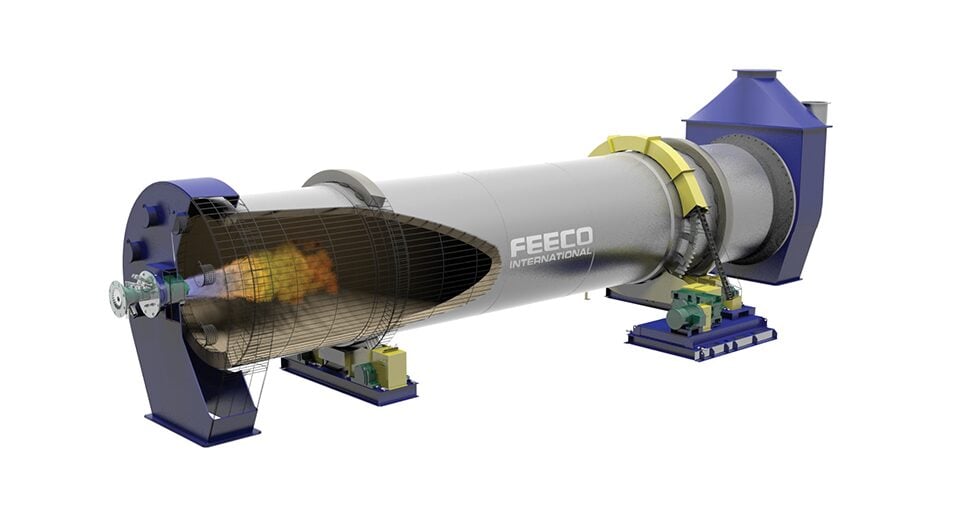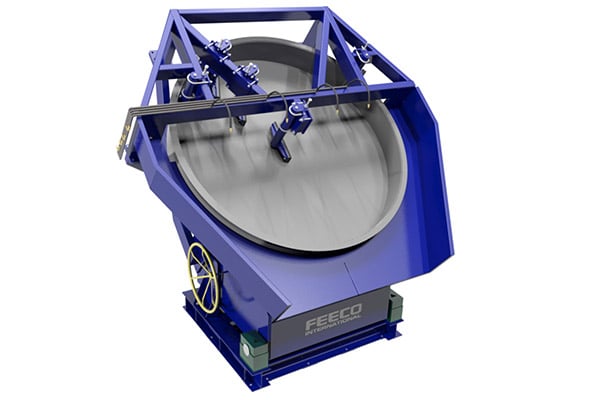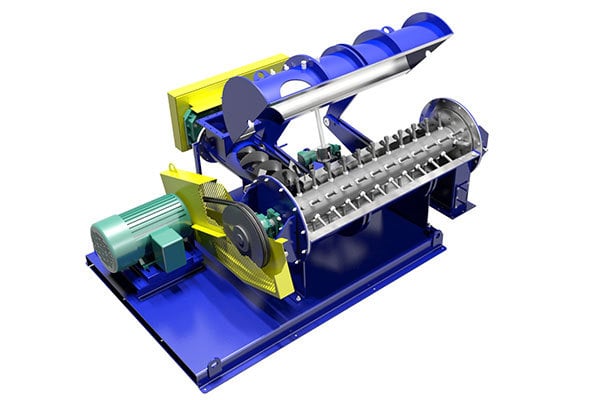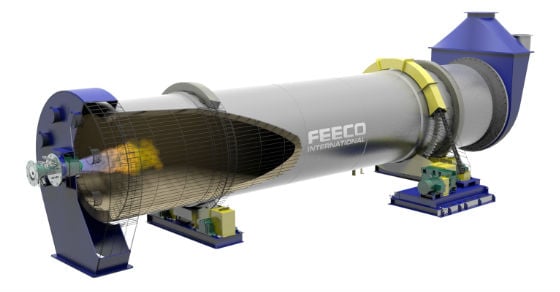Phosphate rock is mined all over the world to produce a number of phosphorus products that are essential to plants and animals- namely, fertilizers and animal feeds. Many predict that demand for phosphate, particularly for use as a fertilizer, will only rise, as the world looks to feed an exponentially growing population. As the world reaches peak phosphorus (the point of maximum global production), the importance of processing phosphate rock to the fullest extent will become increasingly critical. And as high-grade ore deposits diminish, it becomes necessary to find economic ways to process and concentrate lower-grade sources of phosphate ores, effectively upgrading them into high-grade phosphate products.
However, depending on the makeup and grade of the unique ore source, some ores are more difficult to process. In cases such as these, a rotary kiln can offer an advanced thermal processing solution.
How Rotary Kilns are used in Upgrading Phosphate Ores
Many techniques are available for upgrading phosphate ore, with the approach (or combination of approaches) chosen based around the type of ore, as well as the accompanying gangue materials. Methods include techniques such as flotation, gravity separation, scrubbing, washing, and more. And while these traditional methods are effective for many ore types, some ore types present challenges that require a bit more ingenuity. When traditional methods are inadequate, a rotary kiln can be used to accomplish a variety of objectives in order to upgrade phosphate ores:
- Separation of Carbonates
- Decomposition of Organic Components
- Removal of Fluorine
- Nodulizing
Separation of Carbonates
When the impurities are carbonaceous materials, such as in sedimentary calcareous ores, the carbonates must be removed so that they do not consume sulfuric acid during the production of phosphoric acid (the primary means to producing most phosphate products). However, the similar properties of carbonates and phosphates make physical separation techniques difficult, sometimes impossible, and often uneconomic.
In these cases, a rotary kiln can be used to calcine the material at temperatures between 800º – 1000ºC in order to thermally decompose the carbonates into oxides that can then be removed.1
Decomposition of Organic Components
Phosphate rock is commonly found in the presence of organic components. Depending on the end use of the product and by which process the phosphoric acid will be produced, these organics may require removal.
The organic components must be combusted in order to produce an upgraded/purified form of phosphate ore. Rotary kilns can be used to decompose and remove organic materials such as kerogen found with phosphate rock. This process is often referred to as calcination, though it does not meet the technical definition of the term.
Removal of Fluorine
Defluorination, or the removal of fluorine, is another common objective in upgrading phosphate ores, particularly when a highly purified phosphate product is needed, such as in the production of animal feed.
Defluorination is carried out via calcination in a rotary kiln, which drives off the fluorine components and also makes the phosphorus bio-available.1
Nodulizing
While most phosphate rock is destined for phosphoric acid production, some phosphate rock is converted into elemental phosphorus in a furnace. When phosphate rock is to be processed into elemental phosphorus, it is first nodulized.
Nodulizing is a sintering process that serves to harden the ore, make it more permeable, and agglomerate it, allowing it to be more effectively processed in a furnace. Nodulizing consists of heating the feed to high temperatures, which transforms the rock into a semi-solid state. The semi-solid rock then consolidates and hardens as it is discharged from the kiln.
How Phosphate Rotary Kilns Work
Rotary kilns (sometimes called calciners) are an advanced thermal processing device used for high temperature processing, typically with the intention of causing a physical change or chemical reaction within the material.
Rotary kilns are available in two configurations: direct-fired and indirect-fired. When processing phosphates, the direct-fired configuration is used (shown below).

Direct-fired kilns consist of a rotating drum through which combustion gases are passed either co-currently or counter currently in direct contact with the material.
Specific processing temperatures and retention times are used to cause and control the desired reaction.
Pelletizing
It is sometimes desirable or necessary to agglomerate or pelletize the material prior to processing in the kiln, such as in the defluorination process. The feed materials are sometimes ground into a powder so they can be more thoroughly mixed with the reactants. However, a powdered material is likely to become entrained in the kiln airflow. For this reason, the material may be pelletized using a pin mixer or disc pelletizer (or a combination of the two) to produce a granular material that reduces dust and does not risk entrainment.


Upgrading Phosphate Ores: Process Development
The variability between phosphate deposits and even within the same deposit can be problematic to processors. This high level of variability means that processing methods are not universal, and often require trial and error to determine what works for the unique deposit at hand. For this reason, testing is often a necessity when looking to upgrade phosphate rock with a rotary kiln.
Testing is commonly carried out first at batch scale to determine initial process data such as time and temperature profiles. Once batch kiln testing is complete, the process is tested on a continuous, pilot scale.
Testing helps to work out process variables and gather valuable process data. This is not only useful in developing a process around the sample at hand, but it can then also be used in the design of a commercial scale unit.
Conclusion
As the world reaches peak phosphorus, never has it been more important to maximize available resources through efficient and economic processing of challenging and/or low-grade ores.
When traditional beneficiation techniques have been rendered ineffective or uneconomic, the utilization of a rotary kiln can provide an effective means to upgrading and concentrating phosphate ores into a higher-grade product.
FEECO has been working with phosphates since 1951. As a leader in advanced thermal processing systems, FEECO provides custom rotary kilns and calciners engineered around the unique source of phosphate to be processed in order to maximize results. We also offer feasibility (batch) testing, as well as continuous pilot-scale testing in our unique facility – The Innovation Center, where we help transform ideas into full-scale process solutions every day.
For more information, contact us today.
1. Abouzeid, Abdel-Zaher M. “Physical and thermal treatment of phosphate ores — An overview.” International Journal of Mineral Processing 85.4 (2007): 59-84. Science Direct. Web. Feb. 2017.



